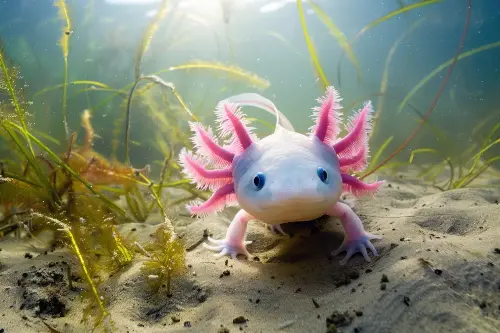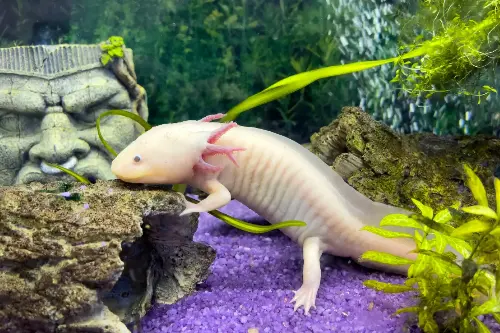In the murky waters of the ancient Xochimilco lake complex near Mexico City, thrives a creature that has baffled and fascinated scientists for centuries. The axolotl, a type of salamander, has been the subject of myth and legend. With an otherworldly appearance that includes gills resembling feathered plumes and a stately yet perpetual juvenile demeanour, it's no wonder these creatures captivate the imagination. But it's their incredible regenerative powers that truly set them apart and have made them the focus of extensive scientific research.

Remarkable Regeneration: Understanding Axolotl's Unique Ability
Unlike most other creatures, the axolotl doesn't just heal from injuries; it completely regenerates parts, sometimes without even a scar. Lose a limb? The axolotl will grow a new one. Spinal cord gets damaged? No problem, it can regenerate that, too. Even portions of its heart and brain can be replaced by fresh, new cells. This outstanding capability has pushed the axolotl to the forefront of research into human regenerative medicine. By understanding the cellular and genetic mechanisms the axolotl uses to rebuild its tissues, scientists hope to unlock similar potential in humans.
A Paragon of Plasticity: Axolotl's Genetic Fountain of Youth
What makes the axolotl's regenerative powers even more extraordinary is that they retain a juvenile state throughout their life, a phenomenon known as 'neoteny.' Unlike other salamanders that metamorphose into land-dwelling adults, axolotls typically remain aquatic and gilled. This eternal youthfulness is key to their regenerative talents. Researchers have discovered that the axolotl's genome is enormous – ten times the size of our own and packed with genetic information. The genes responsible for regeneration, many of which are also found in humans in a dormant state, are active throughout the axolotl’s life.
An Aquatic Ambassador: Axolotl's Role in Ecosystems and Culture
The axolotl is more than just a biological marvel; it's an important part of the ecosystem in its native Mexico. They primarily feed on small prey, such as worms and insects, and are themselves a source of food for larger predators. The axolotl's role in the ecosystem is a delicate balance – one that is under threat from environmental change. Furthermore, the axolotl holds a special place in the culture and has been associated with the Aztec god Xolotl, who was believed to have transformed into an axolotl to escape exile.

Facing Extinction: The Growing Plight of the Axolotl
Tragically, the same remarkable creature that can regenerate its own body parts is powerless against the forces degrading its natural habitat. Urbanisation, pollution, and the introduction of invasive species have led to a drastic decrease in wild axolotl populations, which are now listed as critically endangered. Conservation efforts are in place to protect the remaining axolotls and their habitat, but these creatures remain a stark reminder of the fragility of biodiversity and the impact of human activity on the natural world.
Conservation and Hope: The Future of Axolotl Research and Preservation
In the face of their declining numbers in the wild, axolotls have become a common resident in laboratories across the world, where they continue to provide invaluable insights into regeneration and repair. Their value to research has spawned successful breeding programs that, while securing their presence in science, are also essential for the species' conservation. Yet, there's a growing movement to return these creatures back to their natural glory, through habitat restoration and pollution mitigation efforts, so that the waters of Xochimilco can once again teem with this incredible salamander.
The axolotl is a treasure of the natural world, a symbol of mystique and wonder, and a beacon of biological possibilities. As we uncover more about their secrets, we not only gain a deeper appreciation for these unique creatures but also learn more about the potential within ourselves. Their story is one of resilience and renewal, reminding us of the interconnectedness of life and our responsibility to preserve the remarkable biodiversity that shares our planet. In the eyes of an axolotl, one may just glimpse the mysteries of life's tenacity and the hope for its future.
